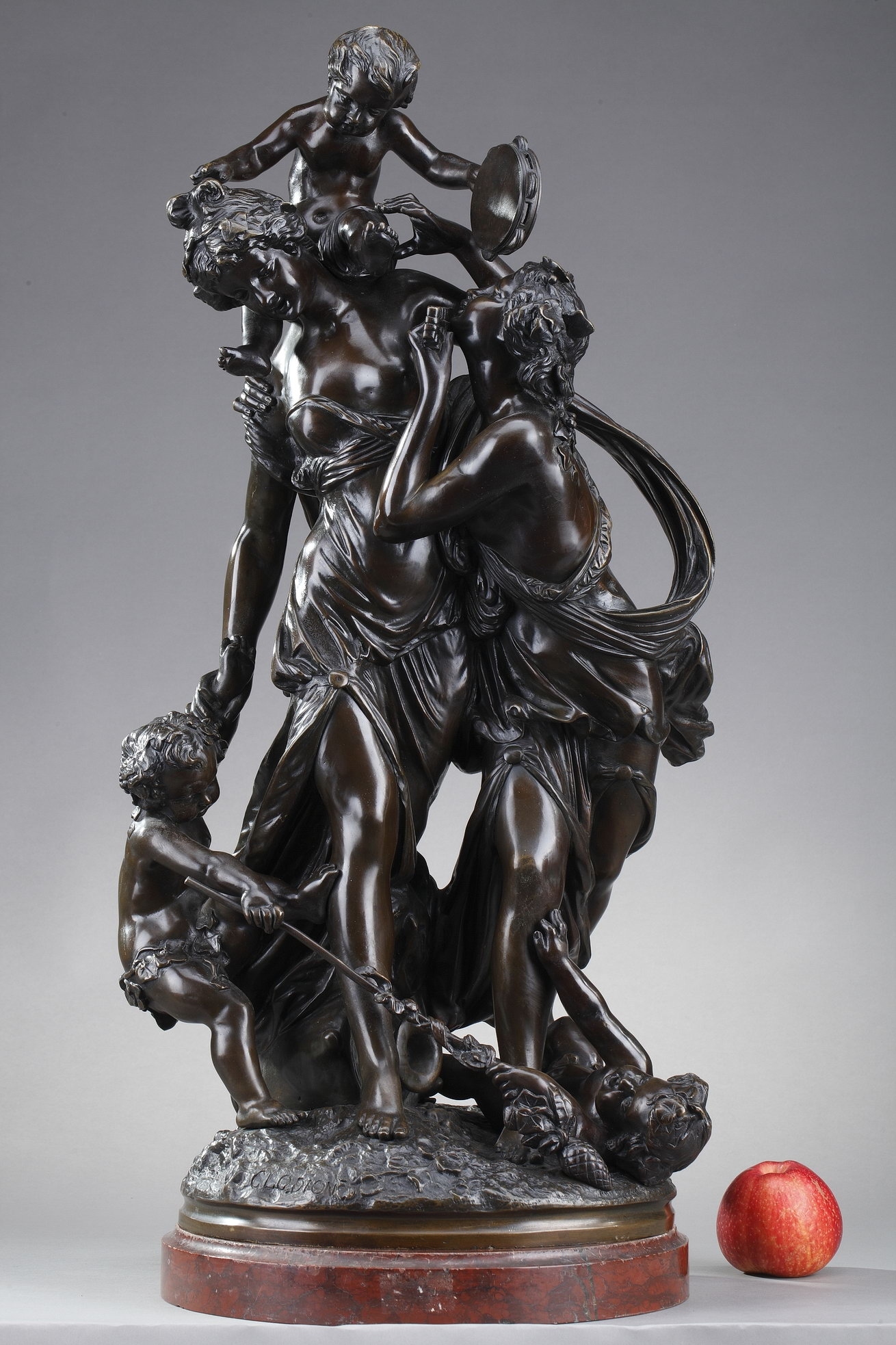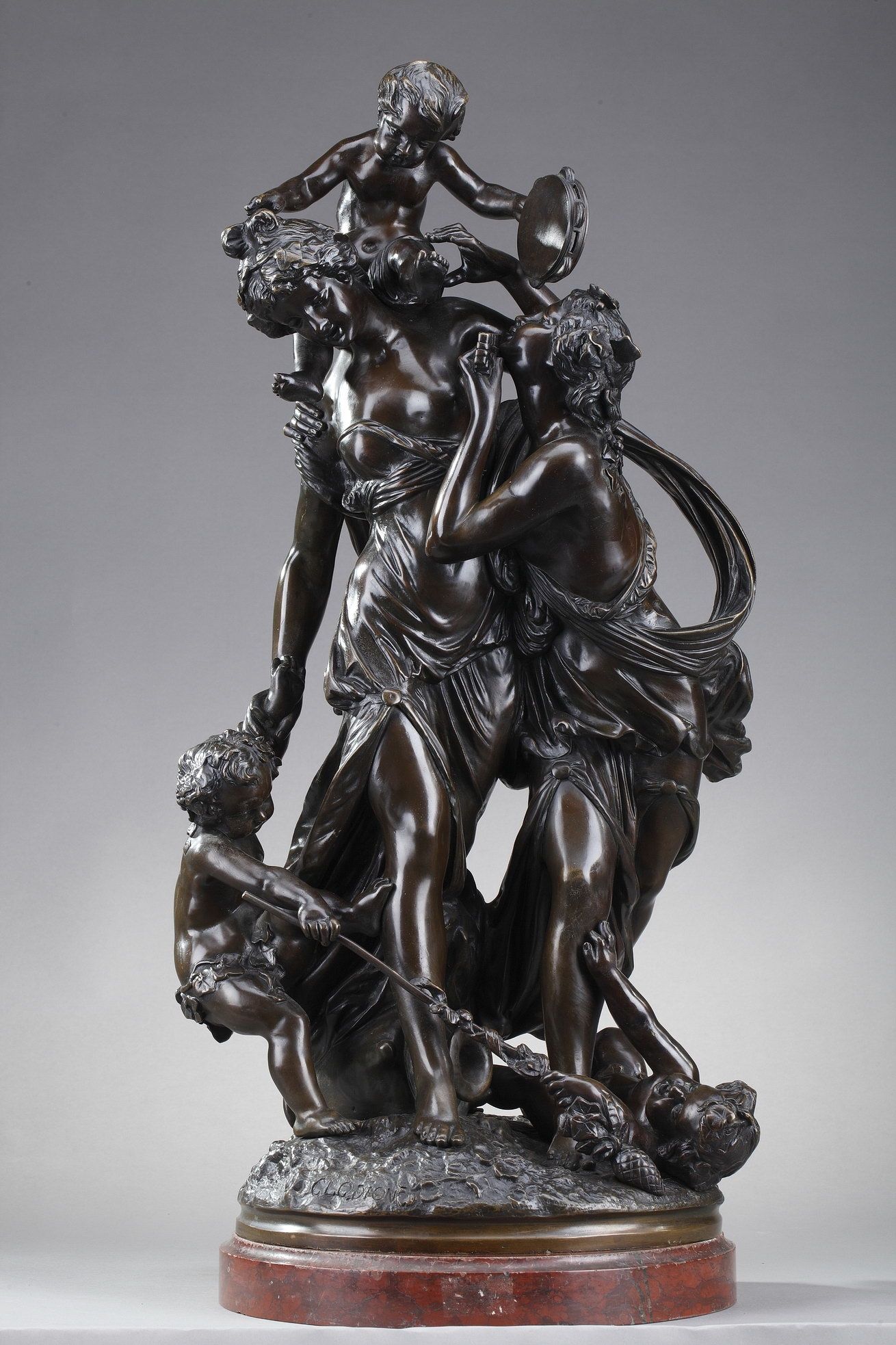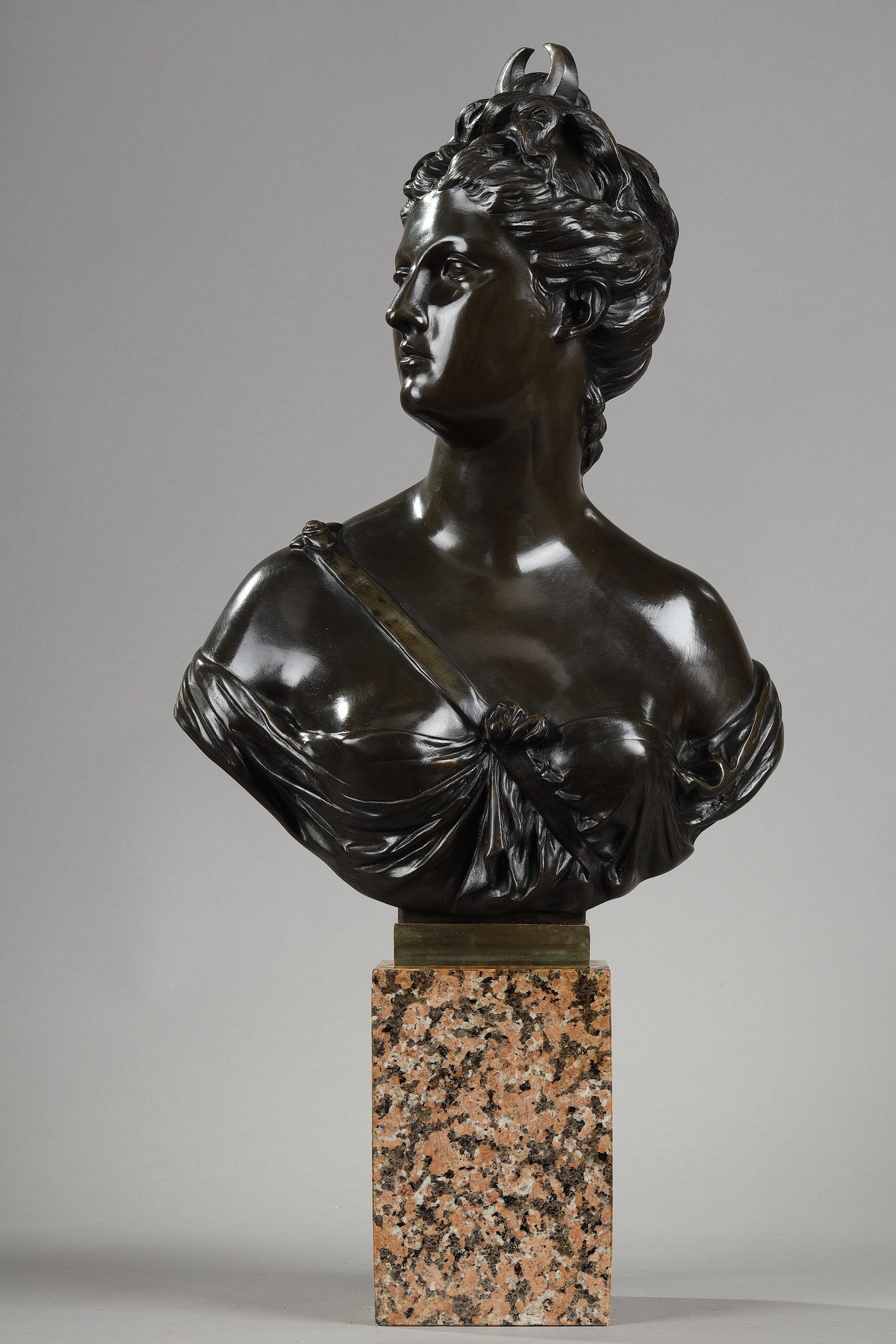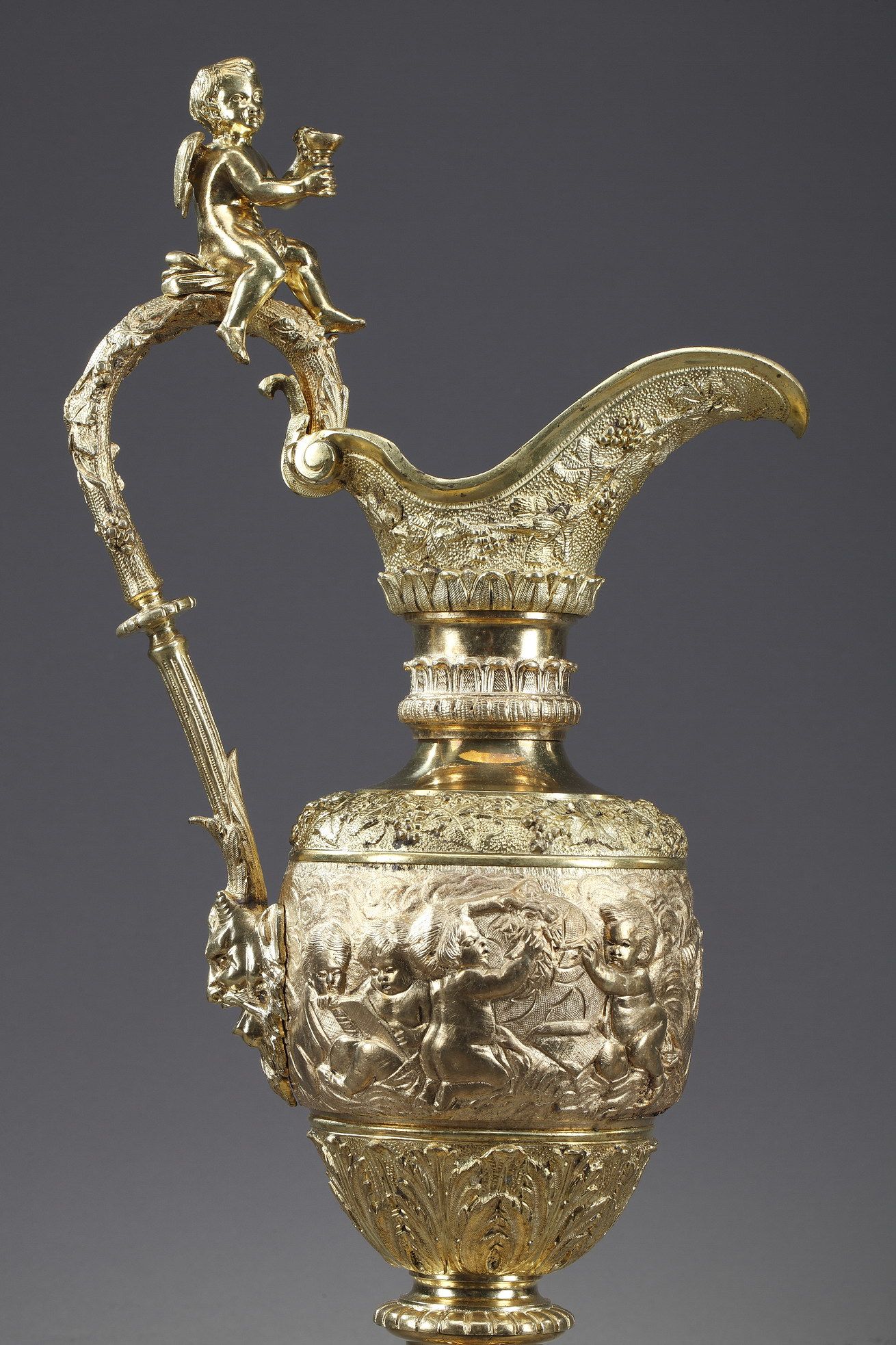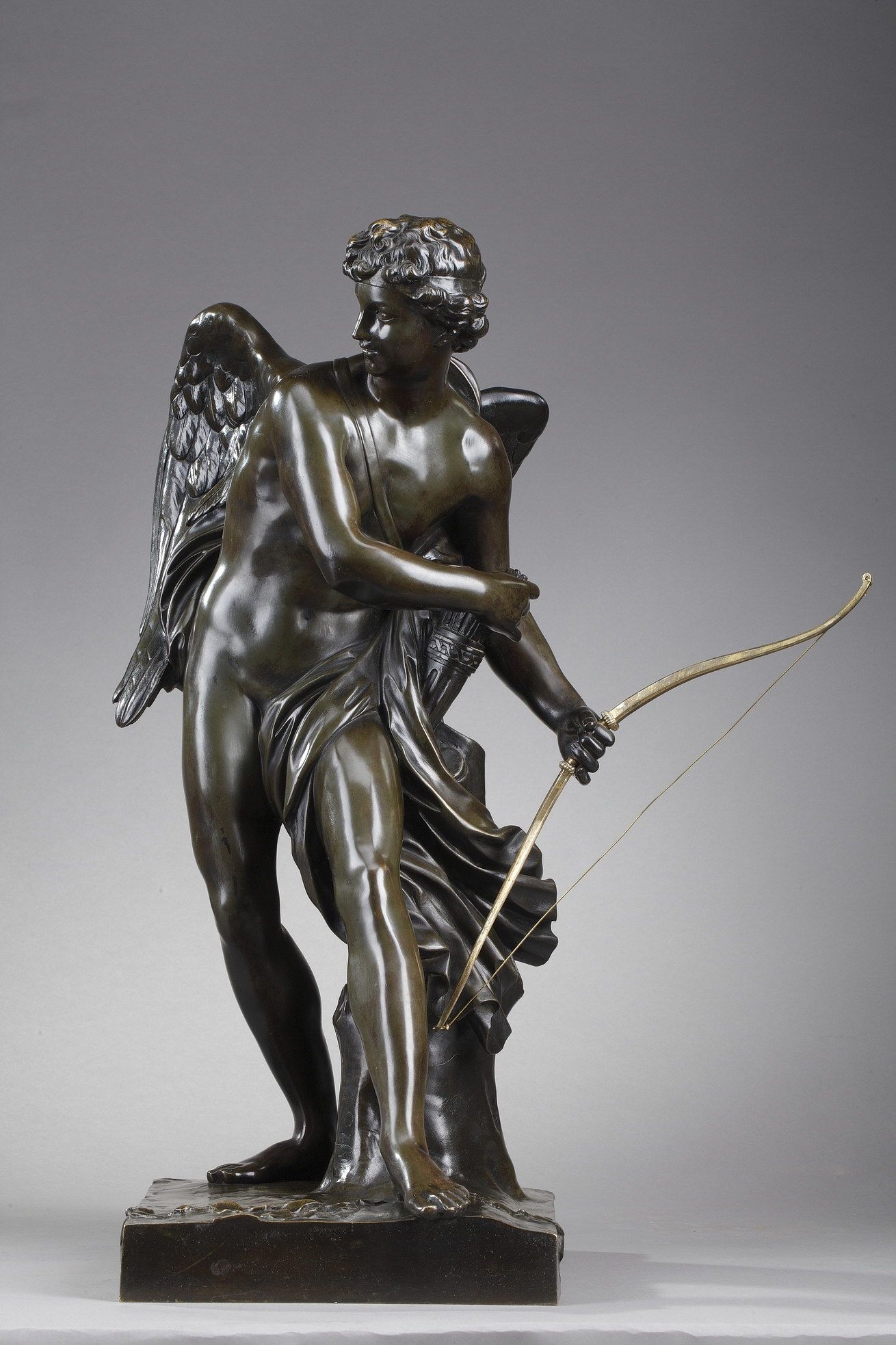Mythology in 19th Century Decorative Arts
03.07.19
"Against the white-painted wainscoting, eight mahogany chairs were lined up. An old piano supported, beneath a barometer, a pyramidal pile of boxes and cartons. Two tapestry armchairs flanked the Louis XV-style yellow marble fireplace. The clock in the middle depicted a temple of Vesta (…)."
Gustave Flaubert, A Simple Heart , 1877.
The bourgeois interior and the vogue for antique subjects
In the 19th century, the bourgeoisie enjoyed a flourishing situation and this social success was expressed in particular by the staging of the decorative elements of the living room: the style furniture, the piano and the marble fireplace housing the clock adorned with antique or mythological .
The Renaissance and the rediscovery of classicism
Mythology was a theme enthusiastically embraced by Renaissance and later Baroque artists, who filled the walls, ceilings, and decorative objects of palaces with legendary figures from the classical pantheon. In France under Louis XV, mythological figures appeared alongside curved lines, rocaille, and exotic themes.
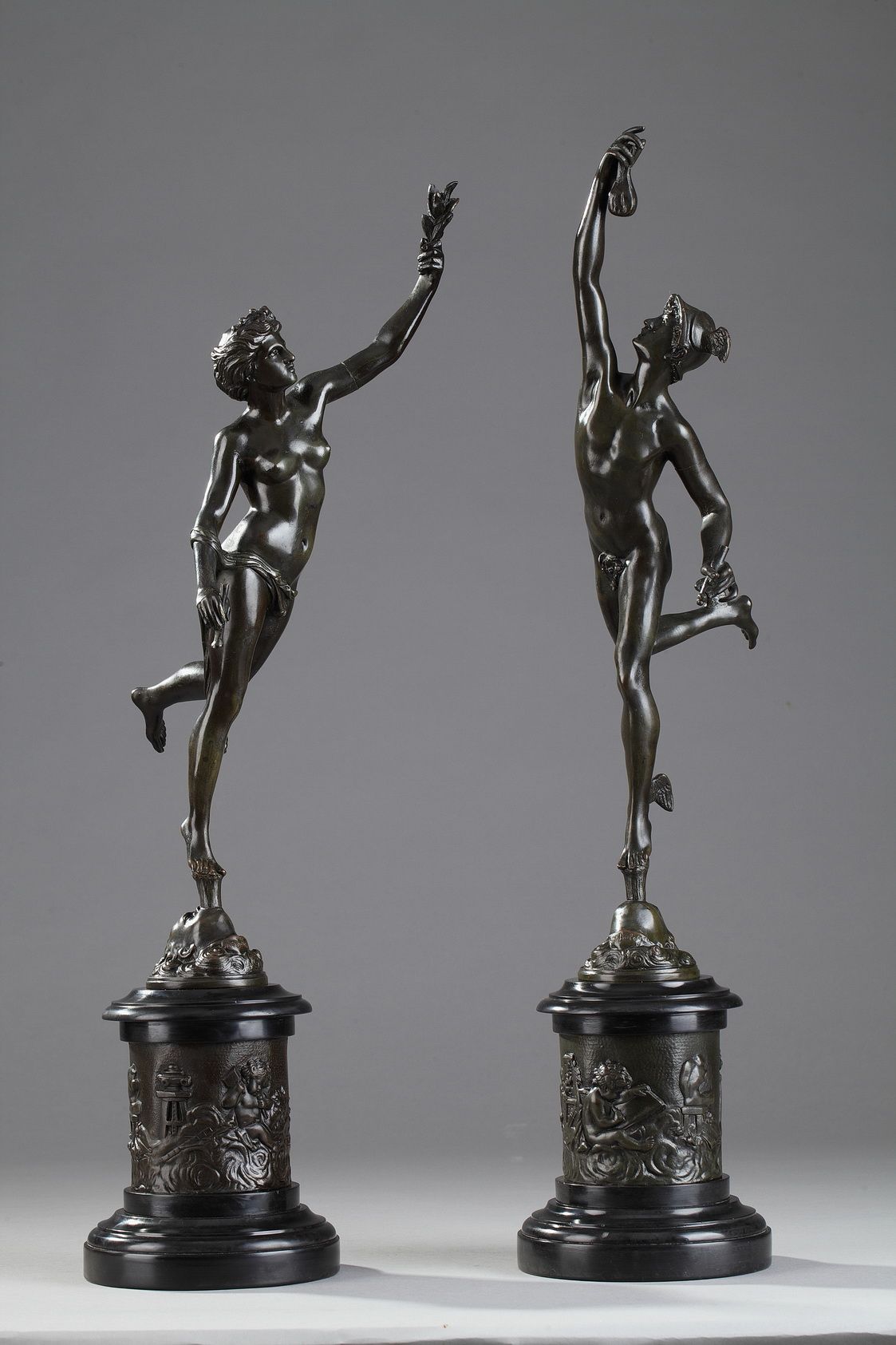
Pair of bronze sculptures "Mercury" and "Fortune" after Jean de Bologne, Renaissance artist
Antiquity Revisited: Neoclassicism
Around 1750, a taste for classical subjects emerged in France. This artistic movement, known as Neoclassicism, was based, among other things, on the use of a decorative repertoire drawn from Greco-Roman history and mythology , such as the Bacchic myth . The 19th century continued this fascination with classicism and ancient civilization, to the point of making it a doctrine, a style.
"Bacchantes and Dancing Putti" in bronze after Clodion
From the Renaissance onward, and for four centuries, Western art drew its models from Greco-Roman antiquity. Mythological figures and groups decorated lamps, clocks , caskets, cups , candelabra , and porcelain or enamel services produced by Sèvres and other European manufacturers. Furnishings adorned with antique were synonymous with "good taste" and remained very fashionable until the end of the 19th century.
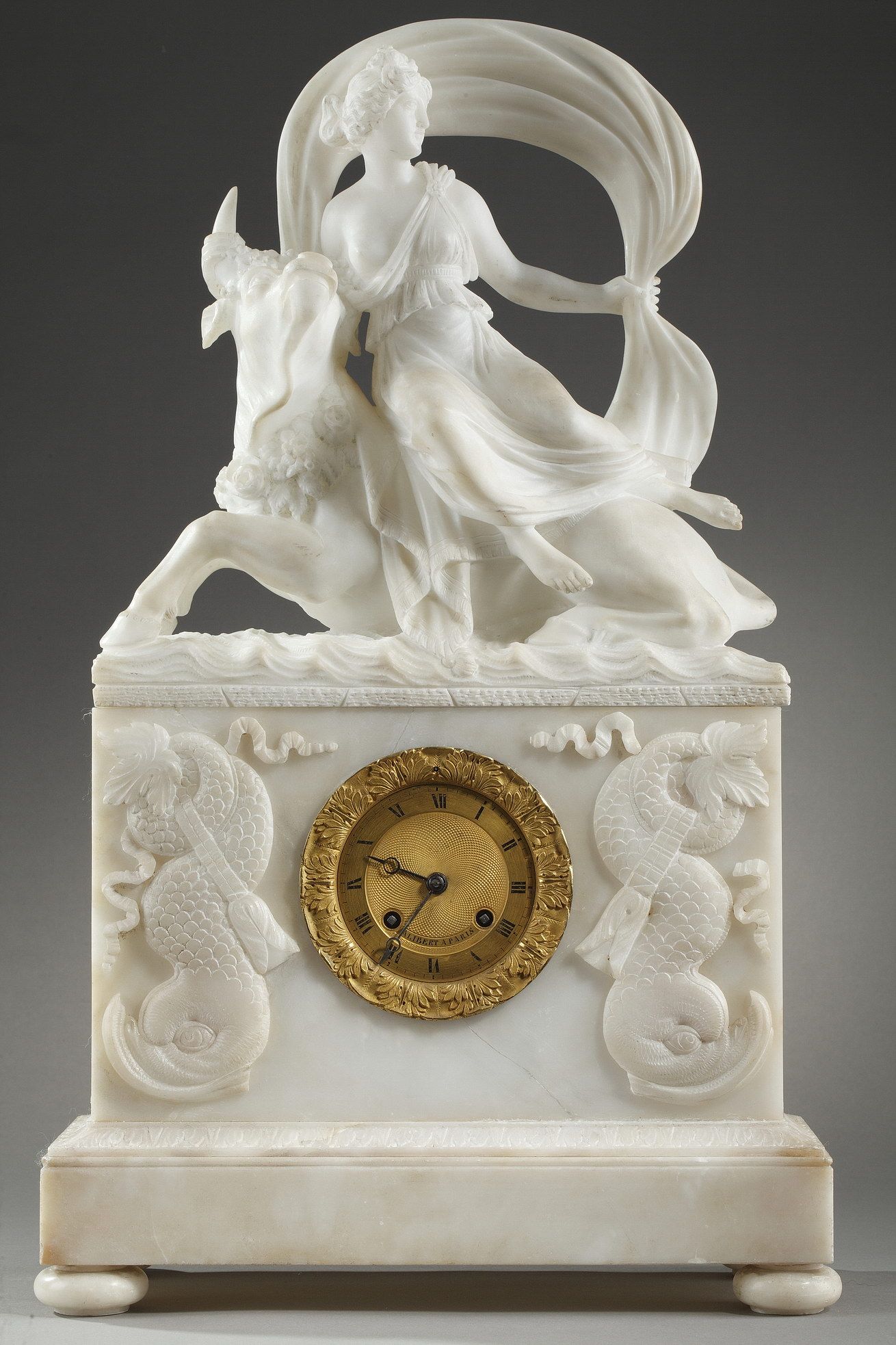 Alabaster clock, the Abduction of Europa, Restoration period
Alabaster clock, the Abduction of Europa, Restoration period
Gods of Antiquity
Bust of Diana the Huntress after Houdon
The legends of Psyche , Diana the Huntress , Mercury , and Bacchus were among the artists' favorite subjects. Groups of nymphs and satyrs, Leda, and Zeus in swan form were produced in large numbers in bronze, marble, or terracotta.
Heroes of Antiquity and Literary Sources
In addition to the gods and goddesses of the Greek and Roman pantheons, people were also drawn to the characters from the stories of the Trojan War , the Iliad , and the Odyssey . Rome, for its part, benefited from sources as prestigious as Homer's two epics, including Virgil's Aeneid Metamorphoses . In the Aeneid the chronicle of the Trojan hero Aeneas, the mythical ancestor of the Roman people. Our two engravings from the Empire period depict, respectively, Aeneas's love affair with Dido, Queen of Carthage, and his encounter with Helen, Queen of Sparta.
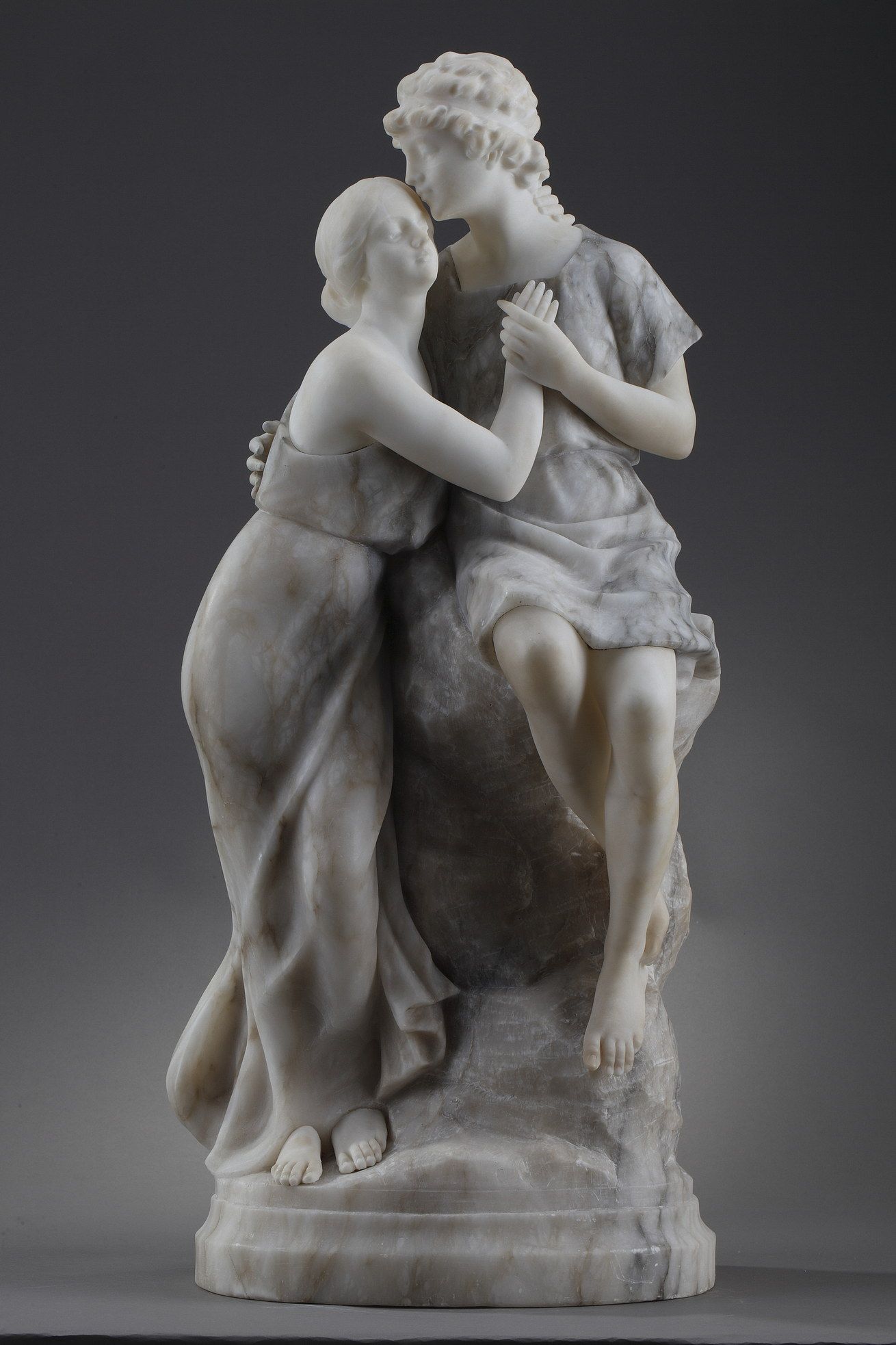 Helen and Paris embracing in marble and alabaster
Helen and Paris embracing in marble and alabaster
Love and a taste for childhood
But the most widespread motif in the contemporary imagination was certainly the figure of Cupid . Rendered in bronze , biscuit porcelain, or porcelain, Cupid takes on the features of a mischievous and playful child. He is often depicted in the company of young women playing music or preparing his arrows, as on our Napoleon III period porcelain coffee service .
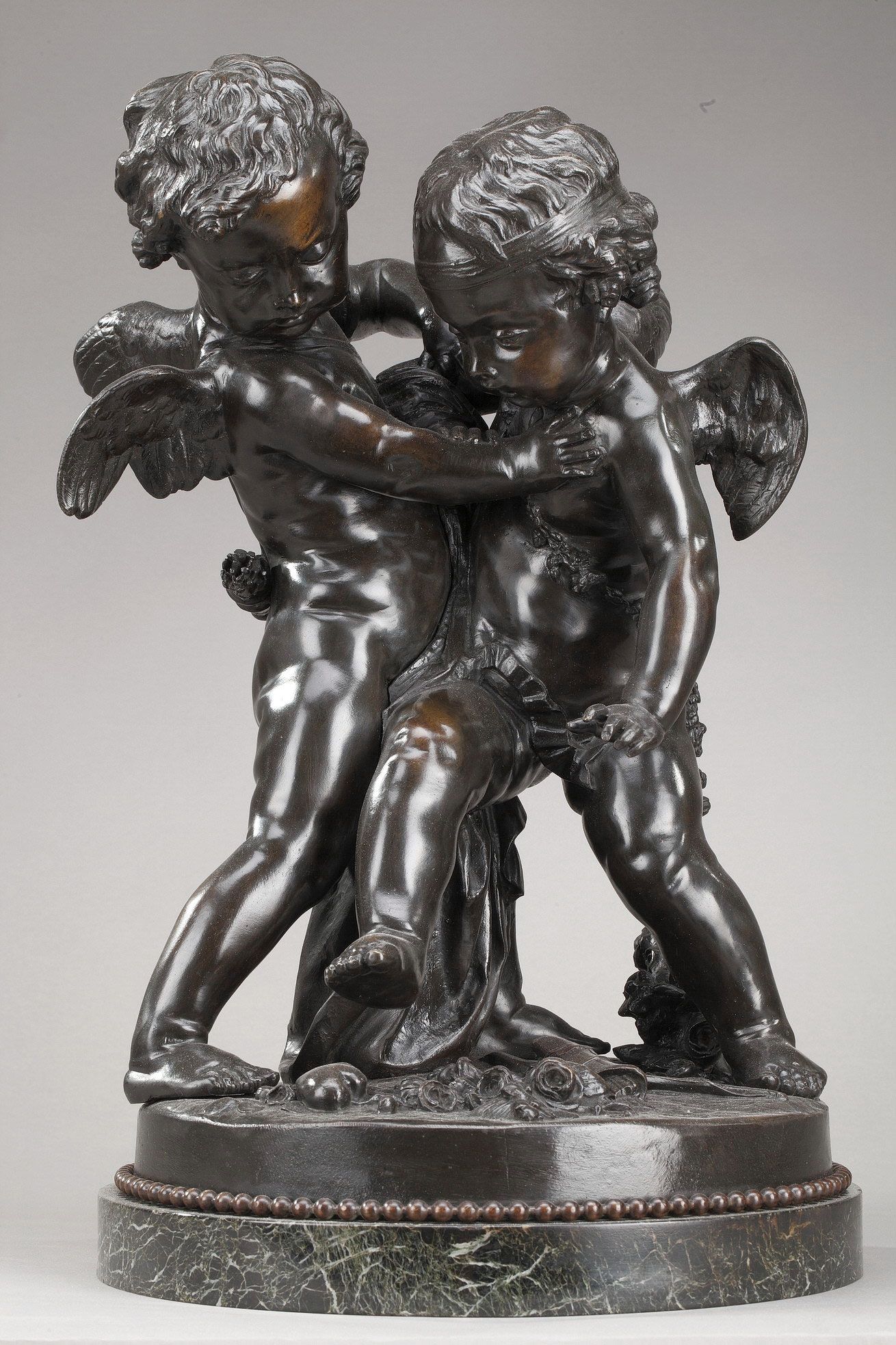 Two lovers fighting over a bronze heart, after Etienne-Maurice Falconet
Two lovers fighting over a bronze heart, after Etienne-Maurice Falconet
Love is featured in numerous entertainments, sometimes accompanying Venus, Psyche , or the retinue of Bacchus. Cupids dancing or drinking cups of wine, following the Bacchantes on ibexes, adorn candelabras and vases and delight discerning connoisseurs.
Our pair of Renaissance-style gilt bronze ewers depicts a procession of putti and Bacchantes celebrating the grape harvest. All carry vine cuttings, ivy wreaths, and bunches of grapes. They dance, drink, and play various musical instruments.
Love, or Cupid, also serves as a pretext for depicting the torment of love and the games of seduction. On this Empire-era porcelain service, a young woman is likely mourning the loss of her lover, while Cupid turns his back on her, abandoning her to her solitude.
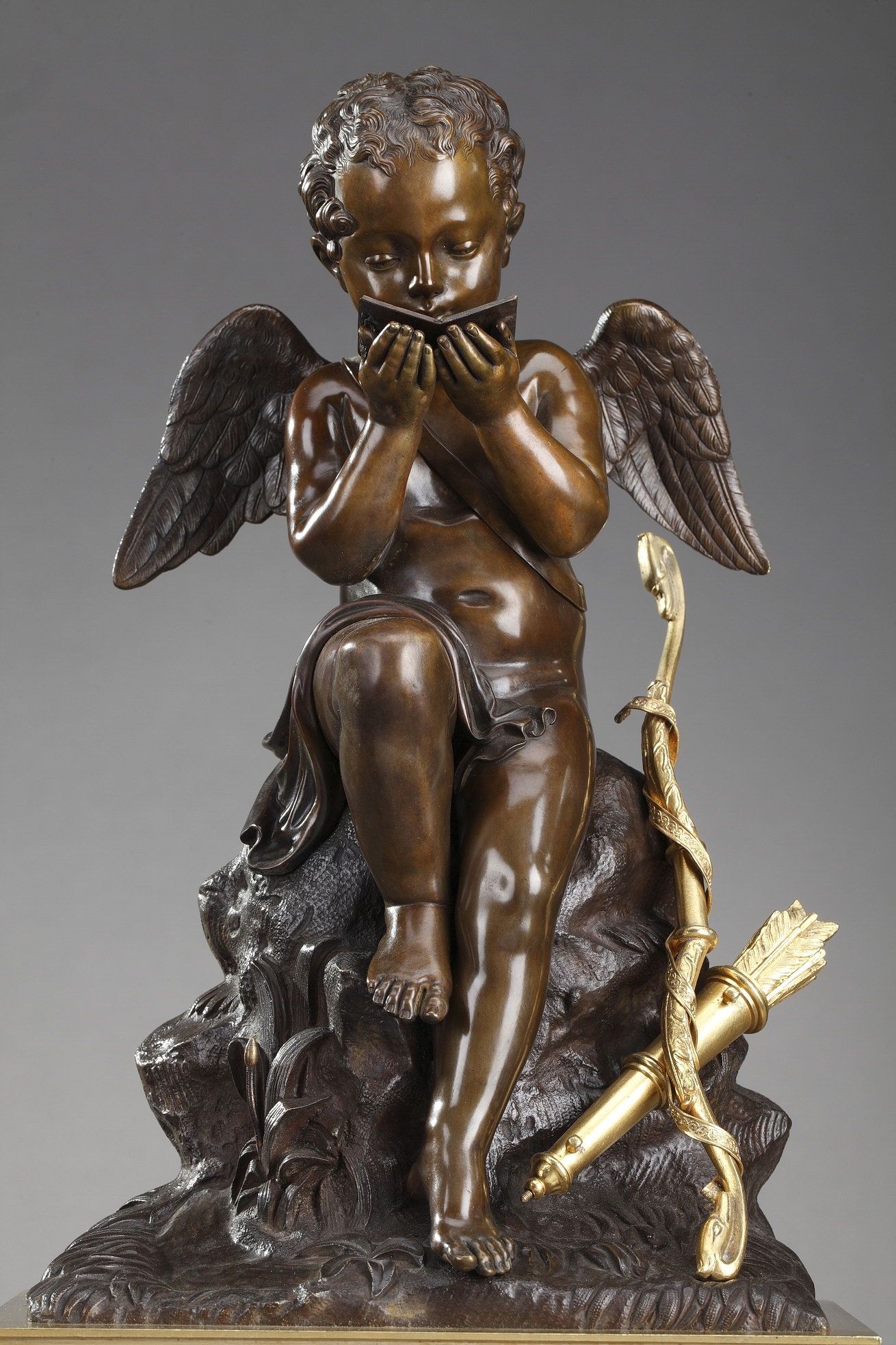 Detail of the clock "Love Reading" by Ledure and Hémon
Detail of the clock "Love Reading" by Ledure and Hémon
Sometimes, Love is serious and pensive, as in sulky Love or the Love Reading clock by the bronze sculptor Ledure and the clockmaker Hémon.
But Love was most often depicted as a joyful, laughing child, following the models favored in the 18th century. Preferring the features of a child, Cupid emerged as an endearing figure, captivating with his gallant and erotic form.
More rarely, he is represented according to the iconographic tradition of Antiquity in the guise of adolescent Eros , as for example on this bronze sculpture where he is about to launch an arrow .
From ancient epics to the deities of the Greek and Roman pantheons, from the heroes sung by Homer and Virgil to the historical figures of classical antiquity, mythological tales have inspired countless artists throughout the centuries and have embellished the furniture as well as the decorations of castles and bourgeois apartments.
Bibliography
- Dawson, Aileen, "Mythology and allegory", The Manufacture of the Enlightenment: sculpture at Sèvres from Louis XV to the Revolution , Dijon, Editions Faton, 2015, pp. 128-164.
- Dupuy-Baylet, Marie-France, "The clocks of the early years of the 19th century and their accompanying furniture objects", in L'Estampille - Objet d'art , no. 314, June 1997, pp. 76-82.
- Impelluso, Lucia, Gods and Heroes of Antiquity , Paris, Editions Hazan, 2013.
- Lièvre-Crosson, From Classicism to Academicism , Editions Milan, 2008.
- "The triumph of Greek taste in French decorative arts (1750-1775)", in L'Estampille - Objet d'art , no. 432, February 2008, pp. 66-79.


